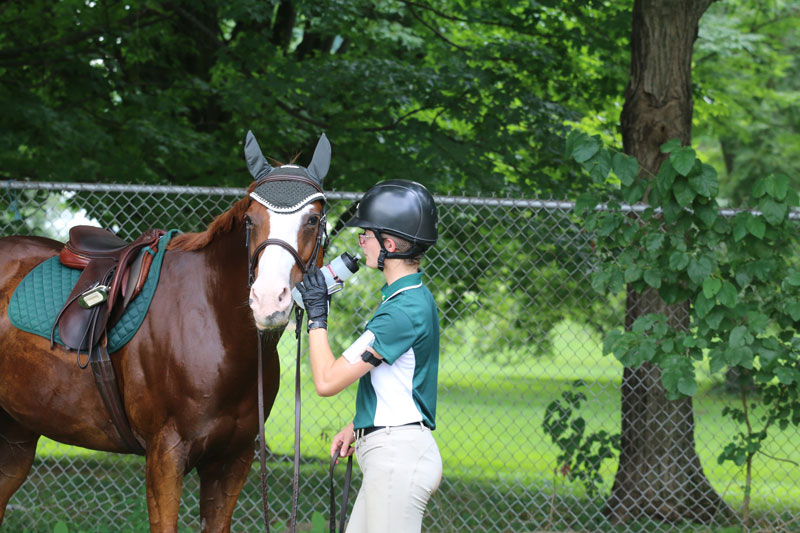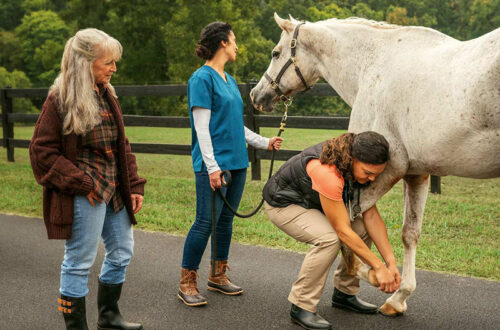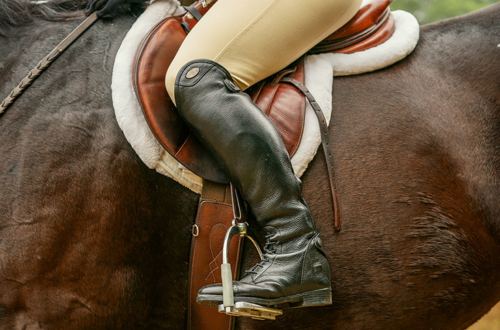
Exercising Safely in Heat for Horses & Humans
By The United States Pony Clubs Safety Committee
With summer in full swing, here are some good tips from the USPC Safety Committee to remember when riding and working in the heat.

For Humans:
- Plan activities for the coolest times of the day, such as early morning or evening.
- Wear loose-fitting (when not riding), light-colored, lightweight clothing.
- Sunburn can cause dehydration and affect the body’s ability to cool down. Wear SPF 15 or higher sunscreen, and reapply per product recommendations.
- Pace yourself, especially if you are not used to exercising when temperatures and humidity are high.
- Take breaks in the shade, especially if you feel lightheaded, confused, weak, or faint.
- Stay hydrated. Don’t wait to drink until you feel thirsty. If you feel thirsty, you may already be dehydrated.
- When you sweat, you lose essential salt and minerals from your body. Drink a sports drink to replace salt and minerals, and stay away from drinks containing large amounts of sugar.
- Know the signs and symptoms of heat-related illness. This information can be found in the USPC Safety Handbook, available on the safety page of the Pony Club website or for purchase from Shop Pony Club.
- Reminder: All USPC volunteers, especially those that are involved with instruction, are required to take the CDC Heat Illness Training Module. Find more information on the safety page of the Pony Club website.
For Horses:
- Don’t work the horse beyond its fitness level.
- Avoid riding your horse when the combined air temperature (F) and relative humidity is over 150, especially if the horse is not acclimated to the heat.
- Watch for normal sweating.
- Create airflow (use fans) in the stable area.
- Work the horse in shade, when possible.
- Provide access to cool, clean water at all times and offer water frequently during work. The amount a horse needs to drink increases as the temperature increases, and horses in work may need two to three times this amount per day to stay hydrated.
- Horses should have ready access to salt to encourage drinking and to replace those salts lost in the sweat.
- If providing electrolytes, also have fresh, clean water available.
- Create an equine cooling station in the shade with a trough of ice water or a hose, buckets, sponges, and scrapers.






